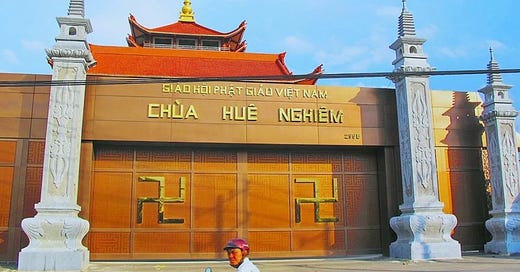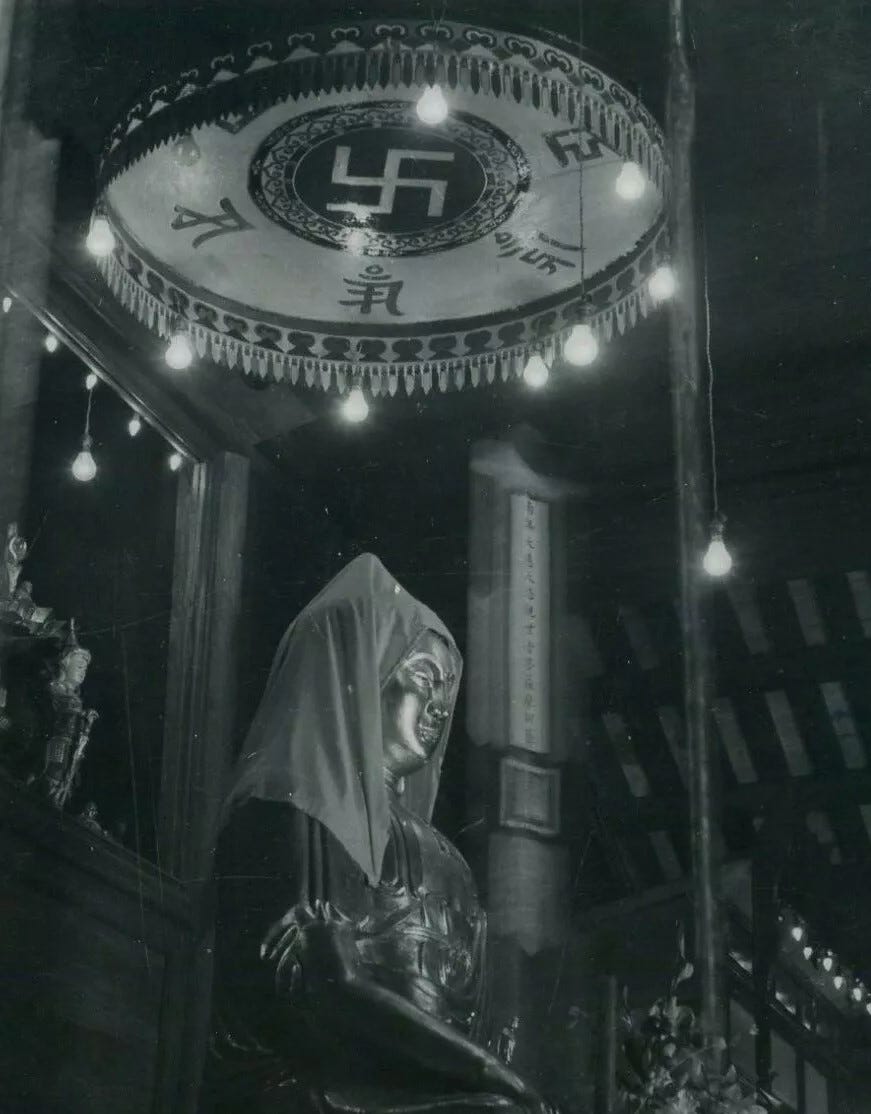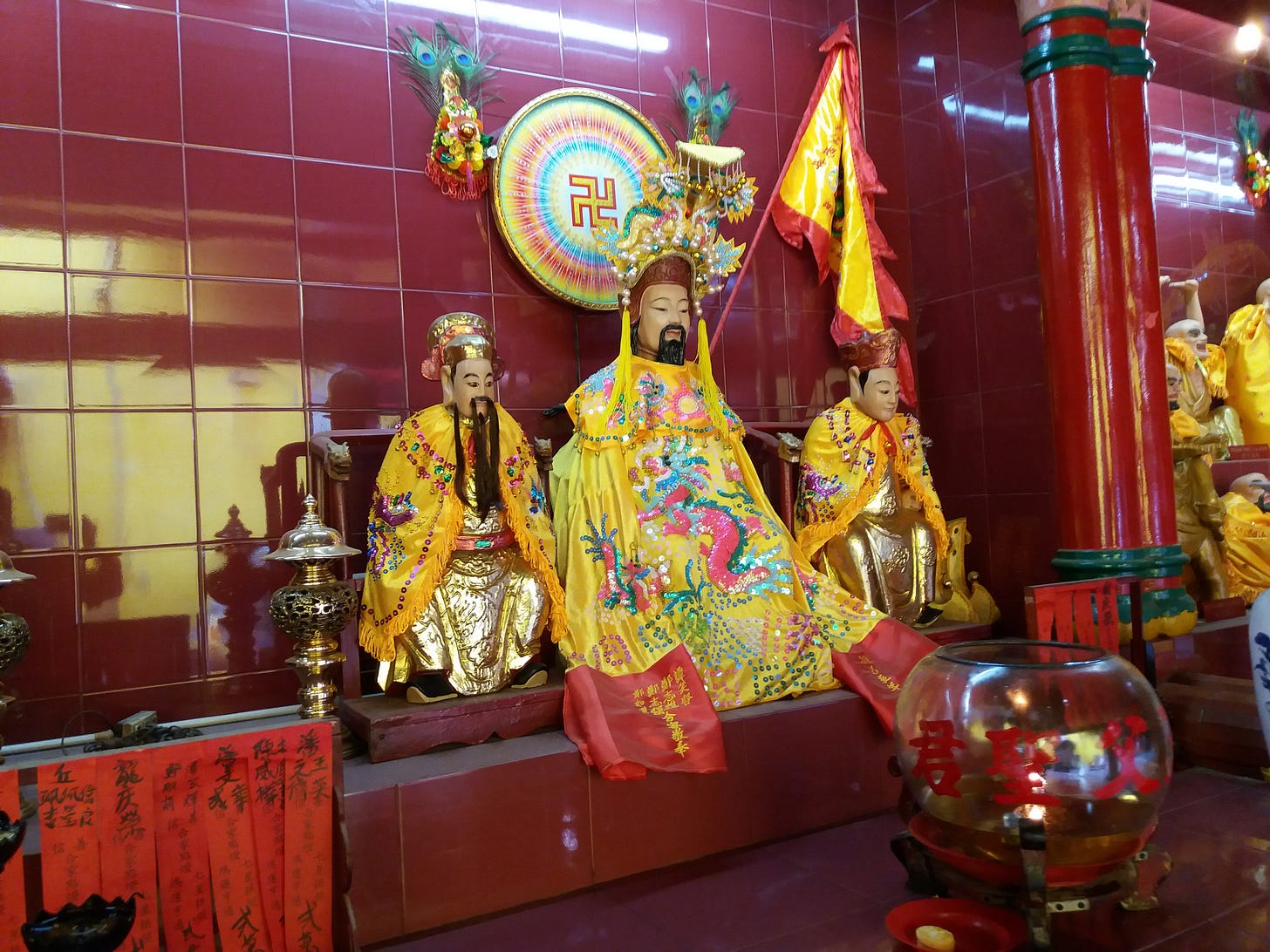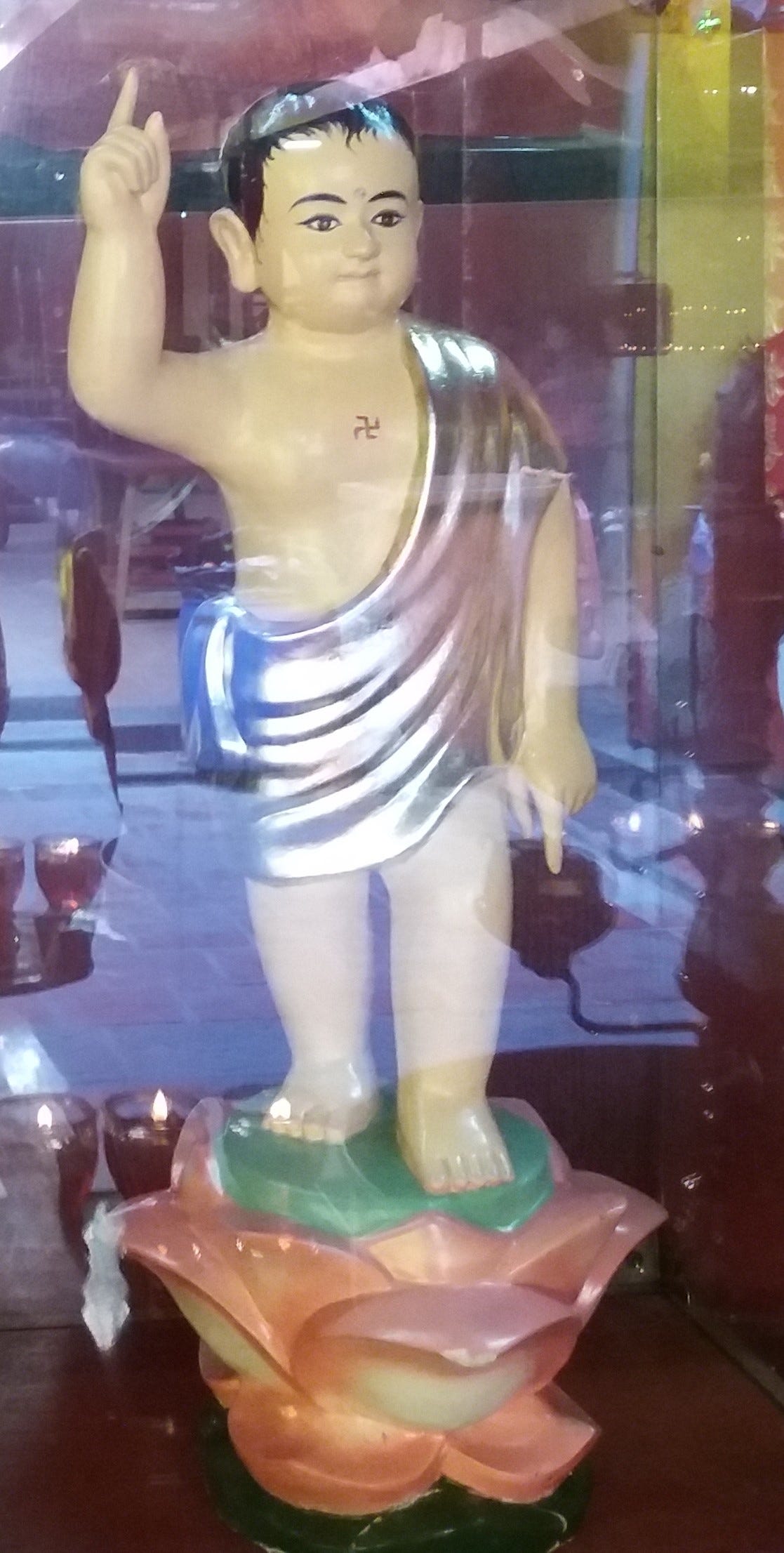When a person from a Western country goes to a Buddhist temple or pagoda in East Asia, they may be shocked to see the swastika (or if the symbol flipped in the other direction it is called a sauvastika) still used as part of religious symbolism today.
This Wikipedia article does a good job of explaining the history of the swastika in Asia.
Many people from the West are shocked to learn that this ancient symbol was borrowed from Indian religions and has much less to do with a particular 1930’s-1940’s German political party when used at a temple or at a pagoda. The word "swastika" comes from the Sanskrit svastika: "su" meaning "good," "asti" meaning "to be," and "ka" as a suffix. The symbol was used by the German political party as a way to link that political party to the ancient Aryan / Indian culture.
In the case of Buddhism, it is actually the symbol of rebirth.
I mention this because I saw some idiot on Facebook rant about another user’s profile picture which had this symbol on the chest of a young Buddha, causing me the realization that some people know very little about cultures other than their own. I mean, seriously! It was on the chest of the young Buddha. How ignorant!
Don’t be shocked if you see this symbol on t-shirts or on a religious statue. It doesn’t have the same meaning that some people from Western countries think it does.
Here are a few examples of the symbol commonly being used as part of religious observance.


Here is a quick excerpt from givemehistory.com/buddhist-symbols
One of the oldest and most important spiritual symbols in India, the Swastika symbolizes the process of rebirth. Whereas in the western world it is used to represent Nazi ideology it has a completely different connotation in Buddhism.
It has four branches, each which symbolizes the four possible places of rebirth, namely the animal realm, the hell realm, the spirit realm, and the physical realm.
Not only is it popular in Buddhism, but it is also used in Hinduism and Jainism. You must have seen it many times imprinted on the bodies of Buddha statues or images. Today, it is also a popular symbol on many clothing items in modern Tibetan Buddhism.








I think part of the problem is with that symbol, that even though it is the other way around to the swastika, it still jars to see it either way, particularly for those who remember the stories from the Second World War.